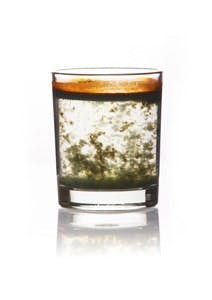Updated 7/6/21
It seems as though each day consumers are met with another story on another a source of water pollution in their water, whether it is from a train car derailment and subsequent spill, mine disaster, natural disaster or other calamity.
“In the 2015 World Economic Forum’s Global Risks Report survey, participants ranked water crises as the biggest of all risks, higher than weapons of mass destruction, interstate conflict and the spread of infectious diseases (pandemics),” said Tim Harper of G2O Water Intl. Ltd., a company that produces graphene membranes for water treatment. He noted that the United Nations World Water Development Report 2015 predicted a worldwide shortfall of 40% between forecast water demand and available supply within the next 15 years.
“Agriculture accounts for much of the demand—up to 90% in most of the world’s least-developed countries—and there is a clear relationship between water availability, health, food production, and the potential for civil unrest or interstate conflict,” Harper said. “The looming crisis is not limited to water for drinking or agriculture. Heavy metals from urban pollution are finding their way into the aquatic ecosystem, as are drug residues, and nitrates from fertilizer use that can result in massive algal blooms. To date, there has been little to stop this accretion of pollutants, and in closed systems such as lakes, these pollutants are being concentrated with unknown long-term effects.”
An Associated Press report published on July 15, 2015, in the New York Times stated, “Nearly one-fifth of the raw groundwater used for public drinking water systems in California contains excessive levels of potentially toxic contaminants, according to a decade-long U.S. Geological Survey study that provides one of the first comprehensive looks at the health of California’s public water supply and groundwater.”
The authors of the study found widespread presence of high levels of arsenic, uranium and other naturally occurring elements that can affect human health in California’s groundwater. The article highlighted several schools in Tulare County where the source of water pollution is so extensive that students are unable to use the drinking fountains.
Although public water systems that rely on groundwater are required to treat the water to reduce contaminants to acceptable levels before it reaches homes and businesses, private water wells continue to be a concern because water treatment is the responsibility of the homeowner.
Sources of Water Contamination
Water contamination comes from three primary sources:
- Rainwater: It is usually safe to drink, but rainwater has become increasingly contaminated due to air pollution in various areas of the world.
- Surface water: Storm water runoff can pollute rivers, streams and lakes, and much of the contamination comes from agriculture and industry.
- Groundwater: Water from underground aquifers is usually safe to drink, but over the past few years contamination has increased. Water that is deep underground is more protected from many types of contamination. Geology and soil makeup also affect water quality. Groundwater may be contaminated by naturally occurring elements like arsenic, selenium or boron.
There are a number of ways to contaminate water: Improperly disposed of chemicals, animal wastes, pesticides, human wastes, wastes injected deep underground and naturally occurring substances all can contaminate drinking water. Likewise, drinking water that is not properly treated or disinfected, or that travels through an improperly maintained distribution system, also may pose a health risk.
Categories of Water Contaminants
Water contaminants fall into four basic categories:
- Aesthetic: Offensive tastes and odors that come from natural and unnatural sources; sediment, dirt, sand or particulates that affect taste; and minerals that affect taste and can become a nuisance for plumbing fixtures;
- Biological: Pathogens that have serious or deadly effects on human health, including bacteria (such as E. coli, Salmonella, Shigella and Legionella), cysts and parasites (such as Giardia, Cryptosporidium and tapeworms), and viruses (such as hepatitis A and poliovirus);
- Chemical: Volatile organic compounds, chlorine, chloramines, pesticides, herbicides, and inorganic chemicals, such as nitrates; and
- Dissolved solids: Minerals (such as calcium and magnesium) and heavy metals (such as iron, manganese, lead, mercury, cadmium, chromium, arsenic, aluminum, copper, radon and barium).
Tackling Water Contaminants
How do we, as a global community, tackle and solve the ever-growing problem of water contamination? The Safe Drinking Water Act was passed by Congress in 1974 to protect public health by regulating the nation’s public drinking water supply. The law was amended in 1986 and 1996, and requires many actions to protect drinking water. This has led to safer water in the U.S., but some countries continue to struggle with water quality and supply.
According to the World Health Organization (WHO), “Safe water supplies, hygienic sanitation and good water management are fundamental to global health.” For much of the world, however, clean drinking water is not as easily accessible as in the U.S. According to the latest WHO report, “Progress on Sanitation and Drinking-Water 2013 Update,” at the end of 2011, 89% of the world population used an improved drinking water source, and 55% had a piped water supply. Approximately 768 million people in 2011 did not use an improved drinking water source, with 185 million of those people using surface water as their primary drinking water source. Only about 4% of the urban population uses unimproved water sources, but the report noted that quality concerns remain, especially where supplies are intermittent. Approximately 2.1 billion people have gained access to improved water supplies since 1990, and 1.3 billion of them live in urban areas. Eighty-three percent of people who do not have access to improved water sources live in rural areas.
Rotary Intl. has proclaimed water purification to be the key challenge of the coming decade. To meet minimum world health goals, 125,000 people per day for the next 13 years would need to gain access to safe water. Each year, 1.8 million people (90% of them children less than 5 years old) die from preventable waterborne diseases. Rotary has asked every club to identify a project associated with safe water.
Contaminant of Concern: Cyanotoxins
According to WHO, during the past few decades, cyanobacteria abundance has increased in many surface water bodies around the world as a result of various factors, such as increased nutrient concentrations, known as eutrophication. Cylindrospermopsis raciborskii has substantially expanded its geographical range: It was initially identified exclusively in tropical and subtropical latitudes, but its prevalence in temperate regions—including northern Europe, southern Australia, New Zealand, the northern U.S. and southern Canada—has increased over the past two decades. Nonetheless, in most of these regions, other cyanobacteria, particularly Microcystis and Planktothrix, remain the most frequent causes of heavy algal blooms.
Water bodies that are influenced by municipal wastewater discharges or subsurface infiltration of groundwater influenced by septic systems are known to carry nutrients at elevated levels capable of increasing cyanobacterial growth. This is exacerbated by wastewater treatment systems with poor nutrient removal capacity. Drought conditions also increase the likelihood of cyanobacterial blooms where wastewater loading remains constant. Runoff from animal feedlots and fields containing mineral fertilizer or manure can introduce similarly high nutrient loads; in regions with effective phosphorus removal in wastewater treatment but intensive agriculture, the latter tends to be the main cause of eutrophication.
These cyanobacterial blooms could continue to plague various areas of the world due to continued drought and climate change. Combining monitoring techniques with toxin testing will assess the effectiveness of the barriers in place, from catchment to wastewater treatment plant outlet. Periodic testing for selected cyanotoxins (e.g., during a bloom and as it declines) also is valuable to verify whether there is a potential health concern during that event.
If significant amounts of cyanobacterial cells, cyanotoxins, and taste- and odor-causing compounds are present in water sources, and if prevention and control strategies cannot be implemented quickly, a number of methods are available to prevent exposure. For microcystins, the most effective control is the removal of the intact cells, as any cell damage in the drinking water treatment plant may lead to toxin release and an increase in dissolved toxins entering the distribution system. For other cyanotoxins, this would be only partially effective, as higher proportions of the toxins occur dissolved in water.
This article is the first in a two-part series on water contamination.
Download: Here



